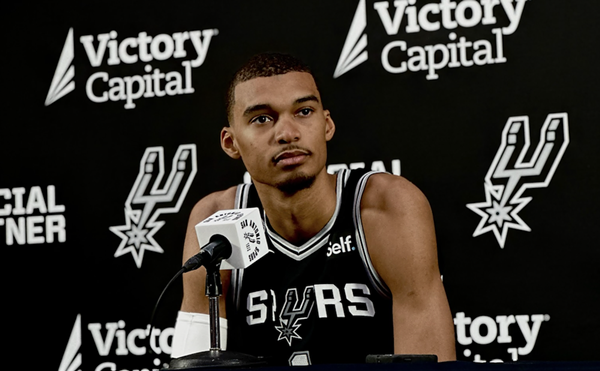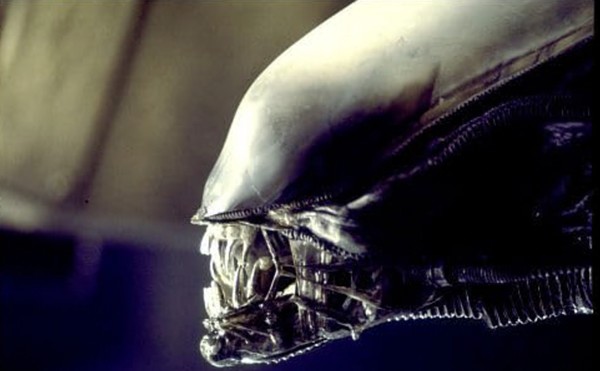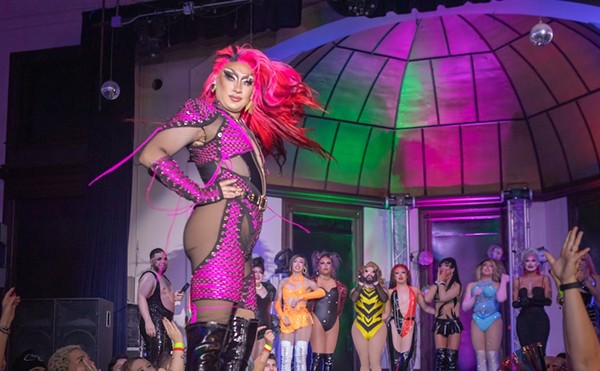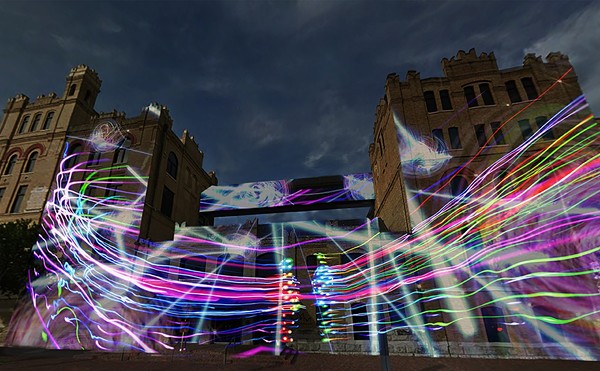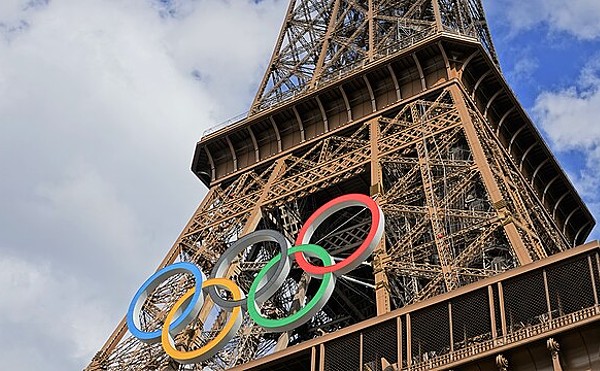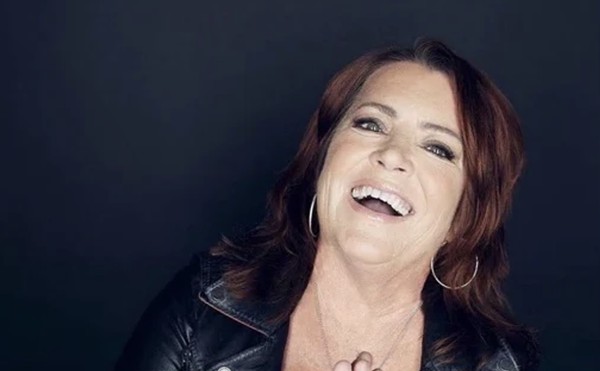Raw aggression is thought to be the peculiar province of men, as nurturing is the peculiar province of women. (The female boxer violates this stereotype and cannot be taken seriously — she is parody, she is cartoon, she is monstrous. Had she an ideology, she is likely to be a feminist.) — Joyce Carol Oates, On Boxing
"I sometimes say I am in a relationship with boxing," — Marlen Esparza, 2012 Olympic boxing medalist.
Decades before the Marquess of Queensbury rules of sports boxing were published in 1867, bareknuckle fights between women were staged in London in the early 1700s. Centuries later, U.S. women boxers were still hard-pressed to be taken seriously in the testosterone-fueled, male dominated, sport until Christy Martin landed on the cover of Sports Illustrated in 1996. Soon after, Laila Ali and Jacqui Frazier, the daughters of two of boxing's most famous champs, fought in 2001.
For the most part, that breakthrough was short-lived, for the dearth of women boxers even today in larger cities and smaller towns often leads young female hopefuls to anxiety — finding a gym that will train them and another woman boxer for a competition match, or even just to spar, isn't easy.
In the past decade, women's boxing has grown rapidly in popularity. Most world boxing organizations now have a woman's division — ditto, the Golden Gloves competition of USA Boxing, and other amateur boxing organizations. The surge can be attributed in part to the successful Oscar-winning film Million Dollar Baby based on short stories by boxing cutman-turned-writer F.X. Toole. The trainer in the film portrayed by Clint Eastwood (who also directed) was loosely based on Toole.
One of the film's more famous lines,"I don't train girls," gave voice to the struggle women boxers face in the heretofore man's sport.
Toole died in 2002, before the film's release. As a reporter for the Express-News, I interviewed Toole when he came to San Antonio to research a never completed novel about a Tex-Mex boxer from Poteet. I asked how he felt about women in boxing after he visited a local Southside gym and briefly trained a professional woman boxer.
"I've trained women who are good fighters," Toole said. "They only fight two minutes and wear chest protectors so it doesn't hurt them up there like it does a man. That's the reason they throw a lot of headshots. My point is the bar has been lowered. That is not to say there aren't any good women fighters. As much as women may be competitive, I don't like to see women fight and get hurt. We best serve ourselves, our family and our culture to whatever gender we're born."
Fast forward: The 2012 Summer Olympics in London. For aficionados of the sweet science, and for those who have tired of women boxing matches as sideshows or opening events in professional boxing, this summer Olympics in London provided a first. Women's boxing is now considered a medal sport.
And wouldn't you know it, two women boxers, Claressa Shields and Marlen Esparza, were the only boxers on the USA Olympic boxing team to return with medals. The men disappointed and returned empty-handed. Flyweight Esparza, a Latina from Houston, garnered the first bronze Olympic medal awarded a woman in boxing while teenager Claressa Shields from Michigan won the first Olympic gold medal for a woman boxer.
The irony of the situation is not lost on Al Alcoser, whose small A&G Boxing Club is a stone's throw from the corner of IH 35 South and North St. Mary's. The small building once housed a mom-and-pop corner store. The faded sign, a ready-made, easily went from A&G Grocery to Alcoser & Gonzalez Boxing Club. An old-fashioned screen door facing the street often attracts passersby and recently a tour bus turned around when they saw the boxing ring inside and the sight of boxers jumping rope.
For Alcoser, 57-years-old, who heads Team Alcoser, it is a dream come true. "When I decided to train young women in boxing, I was met with rejection," the slightly balding trainer with an intense gaze on his ruddy complexion said. He had trained other boxers, male and female over the years, including the then very young Oscar Diaz and his siblings.
"I started out in the late 1970s and 1980s with kickboxing. And then I got married and raised a family. In 1988 I decided to come back as a boxing trainer. I started female boxing in 1990. Everyone kicked me out of their gyms, saying they didn't want any females. I told them that females are here to stay. Since then I've been with female boxing."
His decision to start his own club paid off. He is now considered San Antonio's "godfather of female boxing." And while the gym offers pro and amateur training for both male and female, Alcoser's dedication has been to bring young women to be part of the boxing experience. "I'm not looking for championship boxers, but boxers who are truly dedicated to finding a goal in this training," said Alcoser. "Every fighter comes to me because they weren't treated right or trained right elsewhere. But there are only a few of those. Most of my fighters I start from the ground up. I have had GG champs, LBC champion [Local Boxing Committees]. I've had female professional fighters, but because I'm in the medical field, I can't get away."
After a Saturday morning workout, several young women boxers spoke about their personal goals and how working together as a team under Alcoser has resonated both in and outside the ring.
"I got here a year and a half ago. I was looking for a gym and they were the only one that answered my call," boxer Paloma Campos said. "I came here because I want to be a police officer and I also want to box. It's helped me with everything. It's a good sport. It takes my stress out.
My teammates help me a lot. If it weren't for them I might not be here. My coach is the best. He gets after us but it's for our own good. The way he cares for us is way better than other coaches. Many of them just care about the sport, but coach really cares for us first." Campos, age 20, will fight for the third time in this year's Golden Gloves. She is quick to point out that women have come a long way in boxing. "Times change. It's good to have females in boxing. If males can do it, we can too."
Entering the large square space of A&G Boxing, it has the gritty ambience of those gyms that were part and parcel of Hollywood boxing movies of the 1950s, The high ceiling and the fluorescent lighting, the mirrors, motivational boxing posters harken back. Most striking, however, is an entire wall of Alcoser's greatest hitters. An 8 x 10 glossy of an intense young fighter has a legend in black marker ink: "1999 Golden Glove Champ, Gina 'Lights Out' Dominguez." Another young boxer proudly poses with her trophy; underneath, an inscription reads — "2006 Golden Glove Champ, Lupe de la Cruz." Below her, a color portrait of young African American boxer Natalie "Mo Money" Mosley, a 2012 Golden Gloves Champ, smiles in a clenched fist stance.
If there is a rising star in the Team Alcoser universe, it is Monica Alvarez. Watching her workout is exhaustive, as she moves from the heavy bags, jump rope, the freestanding punching bag, the stationary speed bag, and finally into the ring with Alcoser to spar with the mitts.From a corner of the ring, a boom box blasts out a mournful ballad by Adele that reverberates throughout the gym as the pounding sound of a half-dozen boxers working out add a staccato beat.
Later, the 23-year-old woman boxer sits at the edge of the ring and relates her coming to the gym.
"I started here in August, 2010," Alvarez said. "Actually, my brother found this place. I came here for the fitness purpose. I was also a troublemaker and I wasn't on the right track." At first she didn't want to do the workout, but all that changed within the first months when she started training with Alcoser. "He gave me the discipline and confidence that I can actually achieve something," said Alvarez. "He saw a lot of potential in me and put a lot of work in my training. I thank him for introducing me to the sport, giving me the discipline to push and motivate myself."
And it has paid off in spades. Alvarez began fighting in the 141-lbs division, but trimmed down to compete at 119-lbs in just two years. "I'm a two-time LBC local championship," Alvarez said. "I'm a 2011 Golden Glove champion, and I will be competing in GG 2013. My goal is to get a jacket. I will be fighting in the LBC state championship in Houston. God willing, if I win I will go to the nationals in Washington State. My goal is to get ranked and go to nationals. And ultimately take it as far as I can go."
Boxing heroes? "I love Manny Pacquiao. I admire his style. That fact that he's short, and I am too, shows that we can. My coach is a hero too. He's been like a father figure for me. He cares for me and all the other fighters. It's not just about the boxing in general but about life and he also has a lot of heart."
On the wall near the ring, Muhammed Ali stands defiantly after delivering the knockout punch that has left Sonny Liston on the canvas. Just as important to Alcoser is the history of San Antonio boxing. On the wall above the speedball, he points to two SA boxers have been part of boxing history. He relates that The Ring magazine's famous list of Fights of the Year includes two San Anto boxers: In 1979, Mike "Cyclone" Ayala fought Danny "Little Red" Lopez before a capacity crowd at the Hemisfair Arena. Twelve years later, in the same arena, Roberto "Pikin" Quiroga exchanged blows against "Kid" Akeem Anifowoshe that ended in a unanimous decision in Quiroga's favor. Akeem collapsed and had emergency brain surgery to remove a blood clot. [Quiroga was murdered in 2004].
When asked about the dangers in the ring, Alcoser turns serious.
"Boxing is a dangerous sport, 'cause you get hit in the head a lot. You have to take care of number one, the fighter."
"I tell my boxer it's a contact sport; the head can only take so much punishment. I spar my boys and girls but I don't spar them that often — twice, sometimes once. It's more about technique. Eighty-five percent is going through the skills. We go full contact. I believe in sparring, but they need to save their brain. All wear protectors in the ring and in competition. We have to be licensed trainers. The club has to be licensed. And to spar you have to be licensed and have insurance."
What about the old trainer in Clint Eastwood's boxing film?
"As much as I love Clint Eastwood, his movie, Million Dollar Baby, was too dark."
And the myth that boxing is in one's blood?
"Boxing is not in your blood. That's a lot of bunk. Julio César Chávez can say that his son has boxing in his blood, but that's not true. You have to learn how to box in the gym."
"It is a dangerous sport. Also make sure you have the right trainer.
Have fun with it. If you struggle with it, learn to be a good technician."
How does he view the lure of lucrative contracts from venal promoters?
"Promotion is more about the promoter and the trainer making money. The fighter is the gladiator. If you have the wrong promoter and trainer you are going to win little money. Once you cross that line, you just sold yourself."
A few days later, another group of boxers is working out. Earlier, Alcoser confides that although the Boys & Girls Clubs of San Antonio sponsored Regional Golden Gloves was less than a month away, he was still hoping that his girls would be treated better than in previous years.
"We had problems with the use of the dressing areas. The women boxers were isolated and didn't get to see some of the matches while the boys had unlimited access. One of our girls fought three-three minute rounds [for males] instead of the four-two minute rounds [for women]. I'm still fighting for more respect for our young women."
Although the 2012 Olympics raised the bar in its integration of women boxers, the Golden Gloves -ninety years after its founding as an all male tournament – still has issues with its young women competitors.
San Antonio area regional male boxers who win in the open division move onto the state GG in Fort Worth, and, if they win there, go onto the nationals in Salt Lake City. Female boxers who win regional don't advance to state, but instead can move to the separate Women's National GG Tournament in Florida. After the all-women's victory for the USA Boxing Team at the Olympics, many state boxing organizations are now looking to add a separate all-women state Golden Gloves tournament.
Still, those concerns were not on the front burner as the group of young hopefuls sat down to speak about the pugilistic and personal progress they've made as part of Team Alcoser.
"I came into boxing because I'd be in trouble in school," Ana Lisa Sanchez said. "I'd be sad sometimes, and I wouldn't want to get up in the morning. I've been here since 2012. I want to participate in Golden Gloves this year. It's my life goal now."
Ruth Gonzalez continues to box after the recent birth of a child and while she won't compete in this year's Golden Gloves, she's already planning to participate next year. "I came to Al in 2006 because I heard he was a female boxing coach," Gonzalez said. "I was in the Golden Gloves competition twice. So I trained with him for a while, and after I had my baby, I am now just coming back. Yeah. Hopefully she'll become a boxer when she grows up. She already likes watching me train."




